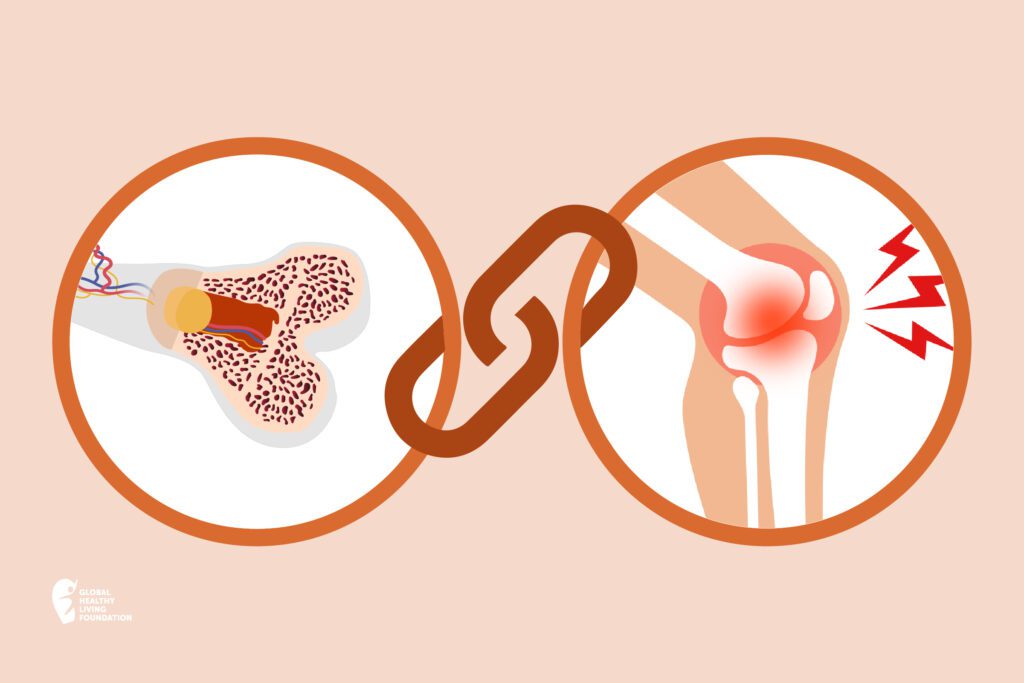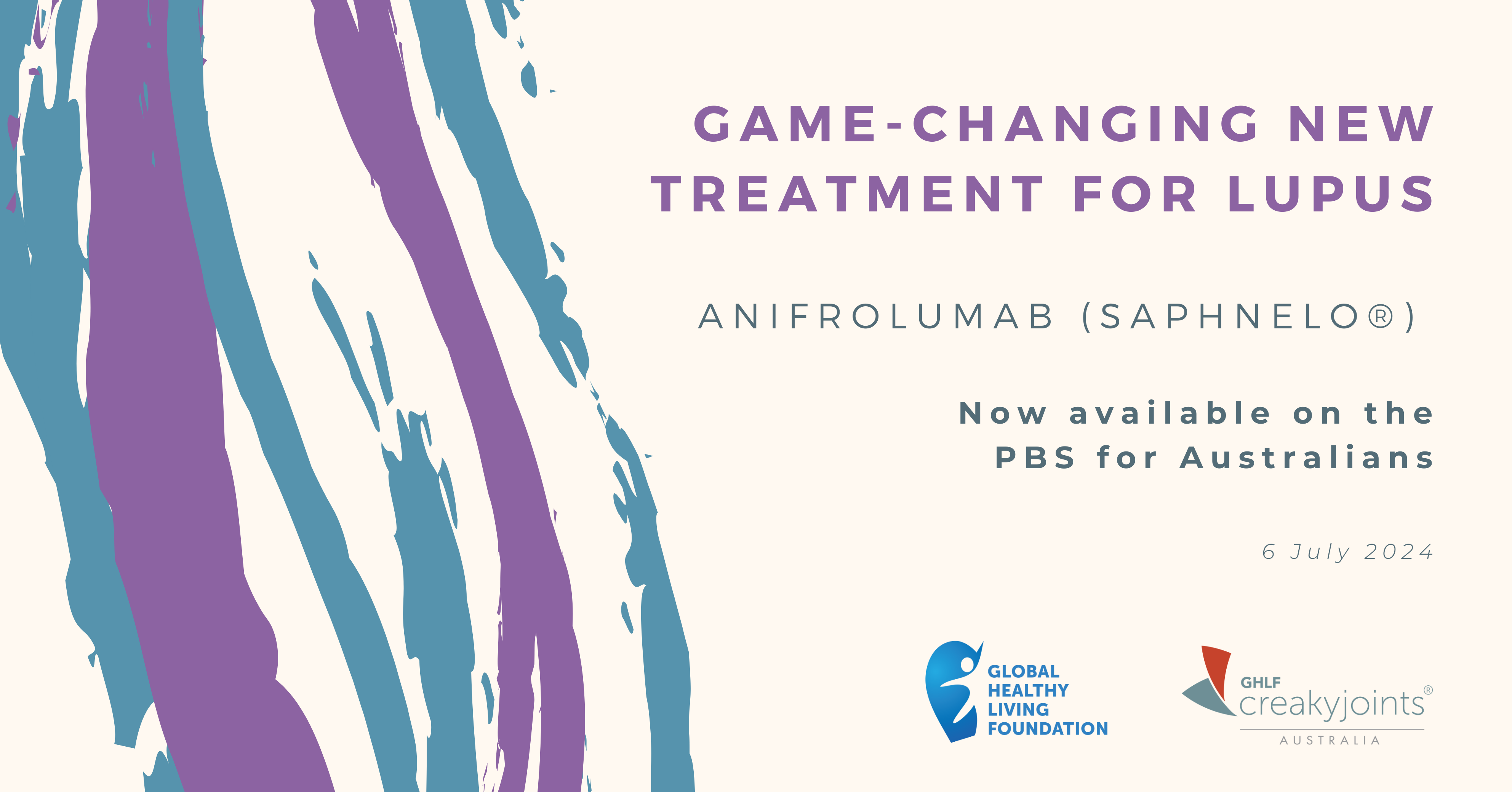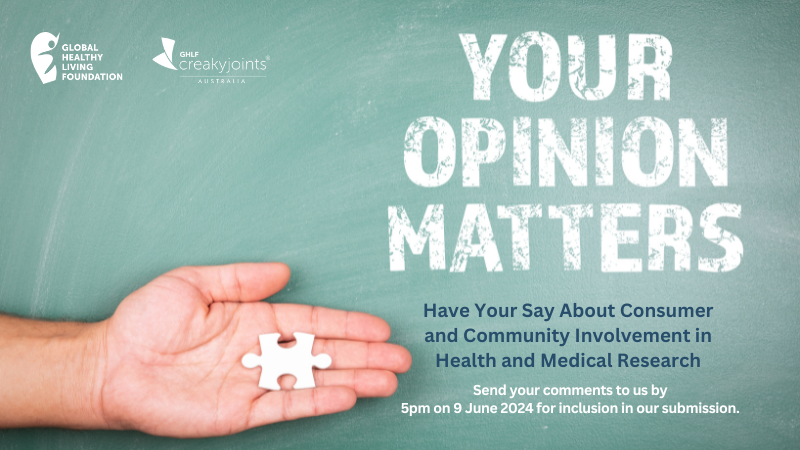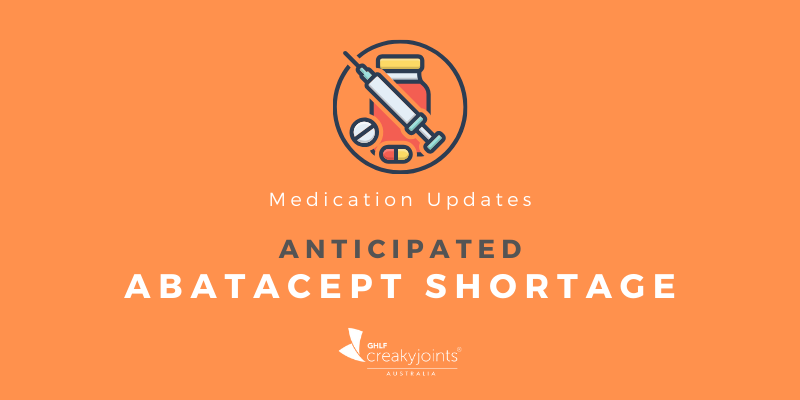This article has been adapted, with permission, from a corresponding article by Kerry Weiss on the CreakyJoints US website. Some content may have been changed to suit our Australian audience.
While arthritis impacts your joints, osteoporosis is a chronic condition that impacts your bones. It causes bones to become weak and brittle and break more easily. And it’s common: Osteoporosis is thought to affect more than 200 million people across the globe.
If you’re living with arthritis, chances are you’re already taking steps to protect your joints. But here’s why you should also find ways to preserve your bone health.
The Link Between Osteoporosis and Arthritis
Arthritis is a broad term that covers more than 100 conditions and causes symptoms like joint pain and stiffness. More than 350 million people have arthritis worldwide. It is one of the leading causes of disability.
It seems especially unfair when having one chronic illness puts you at greater risk of another. But that seems to be the case with arthritis and osteoporosis, which “may coexist in the same patient,” says Nilanjana Bose, MD, a rheumatologist at Lonestar Rheumatology in Houston.
11.5 per cent of Australians with arthritis also have osteoporosis although the exact link between the conditions varies based on arthritis type.
Osteoporosis and osteoarthritis
Osteoarthritis is the most common type of arthritis. It is characterised by “wear and tear” on the joints and surrounding cartilage. The relationship between osteoarthritis and osteoporosis has been studied for decades, and there’s a lot we still don’t fully understand.
When it comes to the onset of these two conditions, some research has found that osteoarthritis and osteoporosis may share certain biomarkers or indicators that contribute to both conditions. Though more studies are needed to fully understand this link.
When it comes to impact, both conditions can take a similar toll: Research suggests that osteoporosis and osteoarthritis can lead to increased pain, disruptions in social life and overall reduced quality of life.
Severity may also play a role: Research shows that more severe cases of osteoarthritis that come with limited mobility along with increased pain may accelerate bone loss and lead to osteoporosis.
Osteoporosis and autoimmune arthritis
Autoimmune arthritis is another common type of arthritis. It occurs when an overactive immune system mistakenly attacks healthy joints. This includes conditions such as:
- Ankylosing spondylitis (AS)
- Psoriatic arthritis (PsA)
- Rheumatoid arthritis (RA)
- Systemic lupus erythematosus (SLE)
Osteoporosis is thought to occur in patients with ankylosing spondylitis for a variety of reasons, according to a recent study in Frontiers in Medicine. This includes limited spinal mobility, increased pro-inflammatory cytokine levels, physical inactivity and malabsorption for patients who also have inflammatory bowel disease.
Complicating the risk in this population is that traditional ways of measuring bone loss, such as bone density scans, are less reliable in people with AS. This is because patients with AS get more calcium deposits in more places in their spine which can make DEXA scans (x-ray scans used for bone density screening) uninterpretable.
While more research is needed, the same trinity of risk factors applies to those with PsA, RA and SLE:
- Chronic inflammation: People with chronic inflammatory diseases often have systemic inflammation, which is associated with generalised bone loss.
- Corticosteroid drug use: One of the biggest reasons someone with inflammatory arthritis is at a higher risk of osteoporosis is taking corticosteroid medication, such as prednisolone, to manage symptoms. With RA in particular, research has found that the combination of inflammation, along with corticosteroid medications (which are often used to control a flare), can negatively impact bone mineral density, increasing the risk of bone fracture and osteoporosis.
- Inactivity: Inflammatory arthritis can cause pain, fatigue, and stiffness, which can make regular exercise a challenge.
In addition, both rheumatoid arthritis and SLE are more common in women who have the greatest risk for osteoporosis — 1 in 3 women over the age of 50 years (versus 1 in 5 men) will experience osteoporotic fractures in their lifetime.
Osteoporosis Risk Factors
Arthritis itself can increase your risk of developing osteoporosis. But other risk factors may also play a role in the development of osteoporosis. These can be broken into two groups: uncontrollable and controllable risk factors.
By familiarising yourself with the many risk factors tied to osteoporosis, you can have an informed conversation with your healthcare provider about your personal risks and what you can do to better protect your bones.
Uncontrollable risk factors for osteoporosis include:
- Gender: Osteoporosis is more common in women, especially in premenopausal women.
- Ethnicity: Osteoporosis is more common in Caucasian and Asian women.
- Age: The older you get, the higher your risk of developing osteoporosis.
- Family history: If an immediate family member (like a parent) has osteoporosis, your risk of developing the condition increases.
Controllable risk factors, or those you can modify, include:
- Medications: Long-term use of steroids or anticonvulsants can contribute to osteoporosis.
- Diet: Low calcium and vitamin D intake may contribute to osteoporosis risk.
- Inactivity: Not exercising regularly, or being inactive, can weaken your bones.
- Weight: Being underweight (or having a small body frame) can impact bone health.
- Smoking: Smoking cigarettes makes you more prone to osteoporosis and bone fractures.
- Alcohol:Excessive alcohol consumption impacts how the body absorbs calcium and vitamin D, both of which are critical for healthy bone development.
Osteoporosis Symptoms
Osteoporosis is sometimes referred to as a “silent” condition. That’s because it often has no symptoms.
As it progresses, it can lead to symptoms like:
- Back pain — especially sudden back pain
- Joint pain
- Changes in posture
- Stooping or loss of height
But most people don’t realize they have osteoporosis until they fracture or break a bone. That’s why it’s so important to learn about osteoporosis and take steps to protect your bones.
Tips to Manage Arthritis and Protect Your Bones
“Leading an active, healthy lifestyle can help both manage arthritis and protect your bones,” says Bose. Start with these strategies.
Eat a healthy, nutritious diet
While there’s no one diet to promote bone and joint health, aim to eat a well-balanced diet full of fruits and vegetables, dairy products, fish and other lean proteins. Dairy products like milk, cheese and yogurt are particularly important, as they’re good sources of calcium and vitamin D. These nutrients work together to help improve joint function, build muscle around joints and preserve bone strength, says Bose.
Australian dietary calcium recommendations vary according to age. For optimal bone health, adults over 19 years need 1,000 mg per day. Once women reach age 51 and men reach age 71 they should increase their calcium intake to 1,300 mg per day.
It is also important to get an adequate supply of vitamin D into your body each day. Vitamin D regulates the absorption of calcium from the foods we eat and is vital for bone development and strength. You can meet your vitamin D needs through exposure to sunlight, eating specific foods and taking supplements (if needed).
Try to focus on getting calcium and vitamin D through your diet. Research shows that, as compared to getting these nutrients from food sources, supplementation may not provide the same protective benefits when it comes to preventing bone fracture.
Stay active
Staying active is a mainstay for managing most types of arthritis, whether you live with a wear-and-tear type like osteoarthritis or an autoimmune type like psoriatic or rheumatoid arthritis. It can also help improve balance, reduce fall risk and help your body absorb calcium and vitamin D, explains Bose. Try to focus on low-impact exercises that are easy on the joints, she advises.
While incorporating a mix of activities into your workout plan is best to promote overall health, when it comes to bone health, weight-bearing activities are especially important. Research has found that resistance exercises in particular, such as strength training, can help preserve both bone and muscle mass.
Maintain a healthy weight
Being overweight can tax joints affected by arthritis. Being underweight can weaken bone health and increase your risk of osteoporosis. Aim to reach and maintain a healthy weight for optimal joint and bone health.
However, if you need to lose weight, proceed with caution. Research has shown that implementing a low-kilojoule diet for weight loss can decrease bone mass, depending on a person’s age. Though the long-term effects that weight loss may have on bone health are not fully understood. Other research has found that the benefits weight loss can have on your overall health may outweigh the risks of lowered bone mineral density.
Quit smoking
Smoking is bad for your overall health on many levels — including bone health and joint health. Smoking boosts inflammation (which can make your arthritis worse), contributes to weakened bones and increases your fracture risk. What’s more, many people who smoke also partake in other habits that affect bone and joint health, like decreased activity levels and poor diet.
Quitting smoking is one of the best things you can do for your health. Findings from one study show that quitting may help increase bone mass previously lost due to smoking. Ask your doctor if you need help with quitting. You may benefit from the use of a smoking cessation aid.
Moderate alcohol use
Research shows that chronic, excessive alcohol consumption increases osteoporosis risk. Heavy drinking has also been linked with a decrease in bone density and weakened bones. In addition, since alcohol has lots of kilojoules, drinking can make it more difficult to achieve other goals that promote good bone and joint health: building muscle mass, reducing body fat and losing weight.
If you do drink, be sure to do so in moderation. The Australian Government’s guidelines to reduce health risks from drinking alcohol state healthy men and women should drink no more than 10 standard drinks a week and no more than four standard drinks on any one day.
When to Talk to Your Doctor About Bone Health
“It’s never too early to talk about bone health,” says Bose. “Being proactive is key — the sooner you can talk to your doctor, the better.”
Because there are often no symptoms of osteoporosis until a bone breaks, routine screening can help prevent osteoporosis. Screening is easy and only takes five to 10 minutes. Early detection can help you take proper steps to prevent fractures and promote bone health.
Routine screening for osteoporosis should be done:
- After age 65 for women, 70 for men or sooner depending on your personal risk factors.
- Every one to two years or more often depending on your health.
- After a bone fracture in those over age 50.
- When taking new medication associated with low bone mass or bone loss.
Talk to your doctor at your next health exam about getting screened for osteoporosis.
This information should never replace the information and advice from your treating physician. It is meant to inform the discussion that you have with healthcare professionals, as well as others who play a role in your care and well-being.
The original CreakyJoints US version of this article was written as part of the GHLF “Building Better Bones” global project and was made possible with support from Amgen.
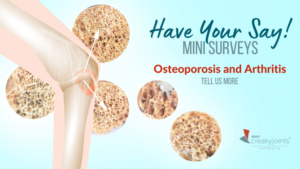
Tell Us About Your Experiences With Osteoporosis Diagnosis and Management
People with arthritis may also have (or be at risk of developing) osteoporosis. However, many of these people are not aware of the link between the conditions or how to treat osteoporosis. You can help shape our future content on these topics by completing our mini survey. Thank you.
Join the CreakyJoints Australia Community
Becoming a CreakyJoints Australia member takes just a few minutes. You’ll receive our members’ e-newsletter featuring:
- Reliable information about arthritis types and treatments.
- Tips for managing daily life with arthritis and related conditions.
- Personal stories from people living with similar conditions to you.
- Links to our podcasts featuring interviews with health clinicians and patients.
- Surveys to help us discover what’s important to you.
Keep Reading
- Alcohol and Arthritis: How Drinking Affects Your Joints, and 4 Tips for Indulging Safely
- Rheumatoid Arthritis Versus Osteoarthritis: What’s the Difference?
- Managing Exercise, Diet and Stress
- Why Being Social Can Be Scary With Chronic Illness
- Practical Tips for Cooking With Arthritis: Making Kitchen Tasks Easier
Australian Bureau of Statistics National Health Survey: Health Conditions Prevalence 2021-22 Table 12 Comorbidity of Selected Chronic Conditions. https://www.abs.gov.au/statistics/health/health-conditions-and-risks/health-conditions-prevalence/2020-21#data-downloads
American Bone Health. How Often Should I Get Tested? https://americanbonehealth.org/bone-density/how-often-should-i-have-a-bone-density-test/
Al-Bashaireh AM, et al. “The Effect of Tobacco Smoking on Bone Mass: An Overview of Pathophysiologic Mechanisms.” Journal of Osteoporosis 2018. doi: https://doi.org/10.1155/2018/1206235
Atik S. “The Role of Biomarkers in Osteoarthritis and Osteoporosis for Early Diagnosis and Monitoring Prognosis.” Joint Diseases and Related Surgery. August 1, 2019. doi: https://doi.org/10.5606/ehc.2019.004
Australian Government Department of Health and Aged Care. How much alcohol is safe to drink? https://www.health.gov.au/topics/alcohol/about-alcohol/how-much-alcohol-is-safe-to-drink
Centers for Disease Control and Prevention. Osteoarthritis. https://www.cdc.gov/arthritis/basics/osteoarthritis.htm
Cheraghi Z, et al. The Effect of Alcohol on Osteoporosis: A Systematic Review and Meta-analysis. Drug and Alcohol Dependence. April 1, 2019. doi: https://doi.org/10.1016/j.drugalcdep.2019.01.025
Global RA Network. About Arthritis and RA. https://globalranetwork.org/project/disease-info/
healthdirect. Vitamin D and Your Health https://www.healthdirect.gov.au/vitamin-d-and-your-health#:~:text=The%20Australian%20government%20publishes%20recommended,of%20vitamin%20D%20per%20day
Healthy Bones Australia. Calcium and Bone Health https://healthybonesaustralia.org.au/your-bone-health/calcium/
International Osteoporosis Foundation. No More Broken Bones! Take Action for Prevention, Diagnosis, & Treatment. https://www.osteoporosis.foundation/
Interview with Nilanjana Bose, MD, a rheumatologist at Lonestar Rheumatology in Houston.
Lim MJ, et al. “A Contemporary View of the Diagnosis of Osteoporosis in Patients With Axial Spondyloarthritis.” Frontiers in Medicine. December 11, 2020. https://doi.org/10.3389/fmed.2020.569449
Mayo Clinic. Osteoporosis. https://www.mayoclinic.org/diseases-conditions/osteoporosis/symptoms-causes/syc-20351968
National Institute of Arthritis and Musculoskeletal and Skin Disease. Osteoporosis. https://www.niams.nih.gov/health-topics/osteoporosis

